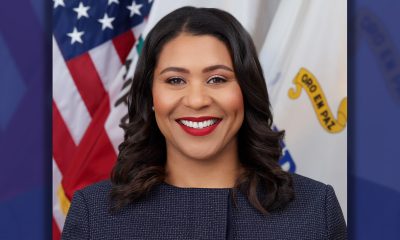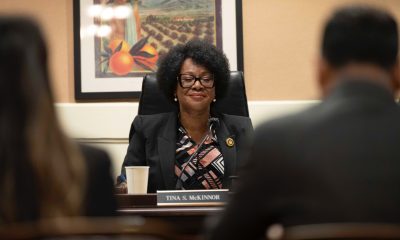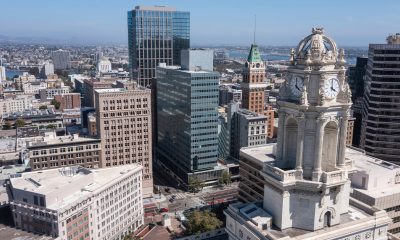Community
Food Insecurity, Hunger Expected to Soar After Cuts to Extra SNAP Benefits
Food security advocates, policymakers, and others had been warning of the dire consequences to those most in need if Congress chose to halt the extra allotments of SNAP benefits. Still, the Republican-led House let the COVID-era supplemental payments wind down at the end of February.
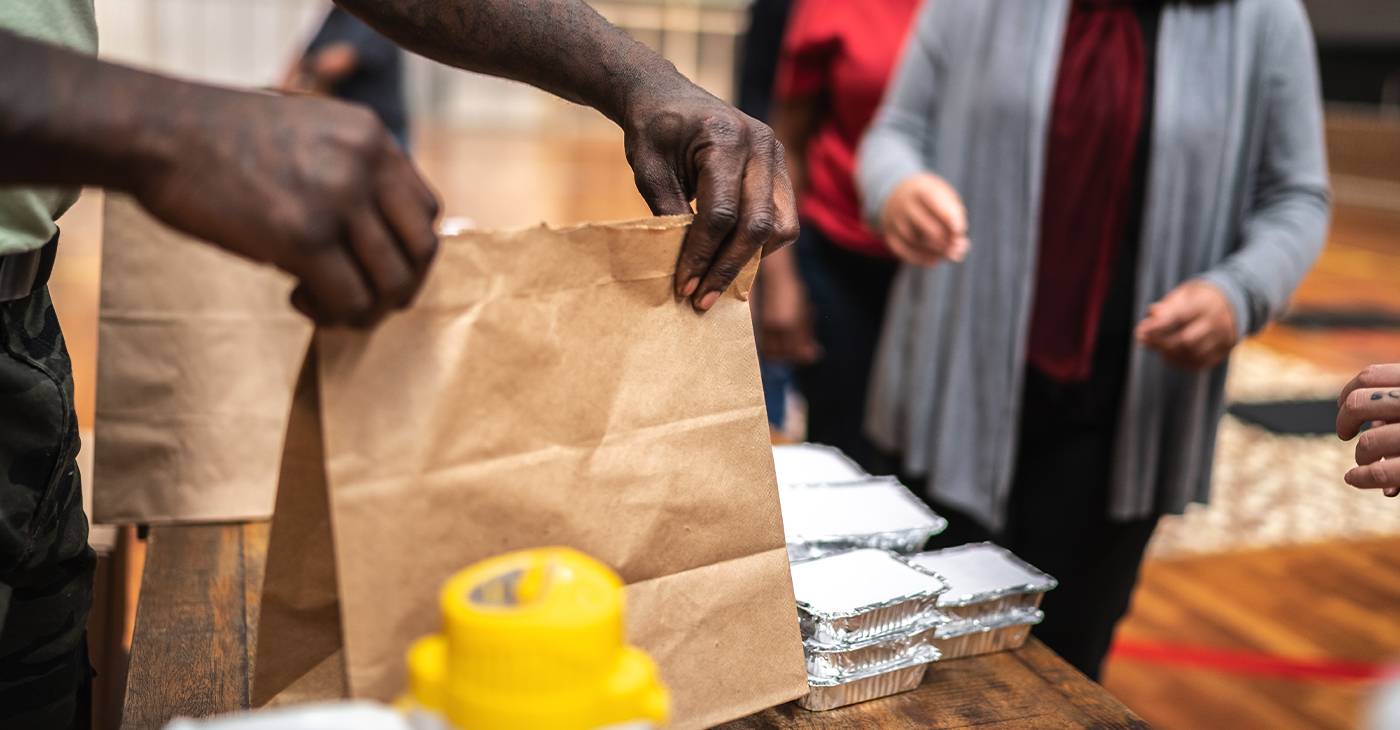
By Barrington M. Salmon
NNPA Newswire
Food security advocates, policymakers, and others had been warning of the dire consequences to those most in need if Congress chose to halt the extra allotments of SNAP benefits. Still, the Republican-led House let the COVID-era supplemental payments wind down at the end of February.
Those closest to the problem say the consequences are already evident in the days since the extra allotments ended. The issues of hunger and food insecurity are being pushed to the forefront of the nation’s myriad challenges. The abrupt benefit cuts are estimated to affect more than 30 million people in 35 states.
On the frontlines, activists fighting the twin scourges of hunger and homelessness, like Anne Miskey, Kymone T. Freeman and Daniel del Pielago, contend that this and other crises were avoidable. Still, Congress, other elected officials, and society at large lack the political will or the compassion to eliminate what is essentially a man-made problem.
“Yet, although the SNAP extra allotments, stimulus funds and other assistance from the federal government helped stave off hunger and homelessness during the COVID crisis,” Kymone T. Freeman said, “the politicians have inexplicably allowed a critical lifeline to expire.”
Freeman said politicians are more concerned about staying in office and catering to the donor class and the wealthy instead of focusing on and delivering programs, projects and policies to working and middle-class Americans, particularly African Americans.
“This sounds like more austerity to me. The fact that they are cutting anything now is obscene and immoral. All it means is more hardship for the poor,” said Freeman, a social justice activist, playwright, and co-founder of WEACT Radio in Washington, DC. “This will increase crime, poverty, distress and misery. The cuts are contributing to hunger. Thirty percent of the children in Washington, DC, live in poverty. A budget is a moral document, and this is where their morality lies.”
Miskey, executive director of Union Station Homeless Services in Los Angeles, California, agreed.
“Much of the inflation and high prices we’re seeing is because of corporate greed. We’re expecting homelessness to skyrocket,” Miskey said. “During COVID, we rented all these hotels and shelters. We managed pretty well during COVID as local, state, and federal money poured in. But with the funding money gone, we’re trying to figure things out. The cost of living, rent, and evictions are going up. The cost of living is driving people into homelessness. Things are going to get pretty bad because of the cost of living.”
Miskey contends that separating food insecurity from gentrification, low wages, displacement, and homelessness is impossible. “COVID-19 has laid bare the structural, institutional, economic, and racial inequities that separate African Americans, Latinos, and Native Americans from their white counterparts,” she said. Marginalized communities have been hit particularly hard by many challenges, many not naturally occurring.
“Healthcare workers, people of color, and immigrants are making horrible wages,” Miskey said. “They cannot afford afterschool care for kids, don’t have money for affordable housing, and struggle to make ends meet. This is a war against the poor. They tell people that they did this to themselves. Millions of people have no opportunity or are intentionally excluded from opportunities. Racism is the #1 factor for excluding people.”
The SNAP emergency allotments were designed to alleviate food insecurity and stimulate the US economy throughout the COVID pandemic public health emergency. According to DC Hunger Solutions, the cuts to SNAP benefits will affect more than 90,000 people in the District of Columbia. On average, when this “hunger cliff” hits, each SNAP participant will lose over $90 a month, DC Hunger Solutions officials explained on the website.
“As a result, average SNAP benefits will fall to a meager $6 a person a day. The “hunger cliff” will hit all age groups and all parts of the District of Columbia. The steepest cliff will be for many older adults who only qualify for the minimum SNAP benefit — dropping from $281 a month to $30,” staff said.
The “hunger cliff” — a perfect storm of a striking reduction of benefits in the face of high inflation and climbing grocery costs — will exacerbate food insecurity and hardship in the District of Columbia and elsewhere. The District will lose more than $14 million in benefits monthly. Emergency food providers can’t fill this gap. Even before the cuts, food banks, pantries, and soup kitchens have reported high demand for assistance, DC Hunger Solutions said.
All over America, Miskey said, people are vulnerable, have health problems, are aging, have been homeless for a long time, including seniors.
“It doesn’t take much: a single income, losing a spouse, an increase in the cost of housing. People are precariously housed. People have to put themselves in danger sometimes,” said Miskey. “People are stealing to survive. People need help, but needing help is seen as something weak or bad. Of course, the Republican Party sells the lottery mentality. People figure they’re going to be up there one day and dream that they’re going to get there.”
Daniel del Pielago agrees with Miskey that Republicans and others who support their ideas and agenda are committed to former President Donald Trump’s promise to dismantle the administrative state.
Del Pielago, organizing director of Empower DC, said these cuts and Republican plans to disembowel the social safety net — including Medicare and social security — is a deliberate policy choice aimed directly at the working class, low-income households, and the poor in this country.
“It’s part of this onslaught of safety net services being cut. I just heard from the city that they’re cutting the Emergency Rental Program 6½ months earlier than expected. And rents in May will go up 8.9% here in the District,” del Pielago said. “DC is super expensive, there are no livable wages for a certain population segment and there’s a sustained attack on low-income people. What we’re seeing in terms of the onslaught is the Trump effect coming into play. We have a bunch of people making these decisions which don’t benefit low-income residents and Black people. They were attempting, and now they’re having success.”
Miskey said as she views the challenges and devastation food insecurity has wrought on poor, near-poor, low-income, and middle-class Americans, she feels anger and frustration because most of this is and was avoidable.
“I think our systems have massively failed people,” she said. “I shouldn’t say that. I don’t think our system has failed. I think our system was set up to fail. They are set up to keep up the status quo, ensuring that those people of privilege and wealth maintain their privilege and wealth.”
Meanwhile, everyone else is blamed for their supposed character defects or failures because supposedly all the opportunities are out there if you grab them, Miskey explained.
“The fact is, our system creates massive barriers for opportunity and doesn’t allow huge chunks of our communities to actually access those things. That’s the shame of our system, the shame of our government. As I said before, we’re a system where we have a war on the poor, not a war on poverty.”
Matthew Desmond, a Princeton University sociologist and the director of the university’s Eviction Lab, said America has a poverty problem, and poverty and food insecurity are deeply intertwined.
“Poverty is measured at different income levels, but it is experienced as an exhausting piling on of problems. Poverty is chronic pain, on top of tooth rot, on top of debt collector harassment, on top of the nauseating fear of eviction,” said Desmond. “It is the suffocation of your talents and your dreams. It is death that comes early and often. From 2001 to 2014, the richest women in America gained almost three years of life while the poorest gained just 15 days. Far from a line, poverty is a tight knot of humiliations and agonies, and its persistence in American life should shame us.”
Desmond said housing assistance and food stamp programs are “effective and essential, protecting millions of families from hunger and homelessness each year,” he said in a March 16 column in the New York Times. “But the United States devotes far fewer resources to these programs, as a share of its gross domestic product, than other rich democracies, which places America in a disgraced class of its own on the world stage.”
That disgrace is illustrated in the stats showing that 33% of Americans live in households making less than $55,000, he said.
“Many are not officially counted among the poor, but there is plenty of economic hardship above the poverty line,” Desmond said. “And plenty far below it as well. According to the Supplemental Poverty Measure, which accounts for government aid and living expenses, more than one in 25 people 65 or older lived in deep poverty in 2021, meaning that they’d have to, at minimum, double their incomes just to reach the poverty line.”
He said Americans must commit to becoming poverty abolitionists to break this cycle.
“Like abolitionist movements against slavery or mass incarceration, abolitionism views poverty not as a routine or inevitable social ill but as an abomination that can no longer be tolerated,” he said. “And poverty abolitionism shares with other abolitionist movements the conviction that profiting from another’s pain corrupts us all. Ending poverty in America will require both short- and long-term solutions: strategies that stem the bleeding now, alongside more enduring interventions that target the disease and don’t just treat the symptoms.”
This includes appropriately addressing the housing crisis, which forces most poor renting families to devote at least 50% of their income to rent and utilities; immediately expanding housing vouchers to reduce the rent burden; pushing for “more transformative solutions” like scaling up the country’s public housing infrastructure; building out community land banks; and providing on-ramps to homeownership for low-income families.
Alameda County
DA Pamela Price Stands by Mom Who Lost Son to Gun Violence in Oakland
Last week, The Post published a photo showing Alameda County District Attorney Pamela Price with Carol Jones, whose son, Patrick DeMarco Scott, was gunned down by an unknown assailant in 2018.
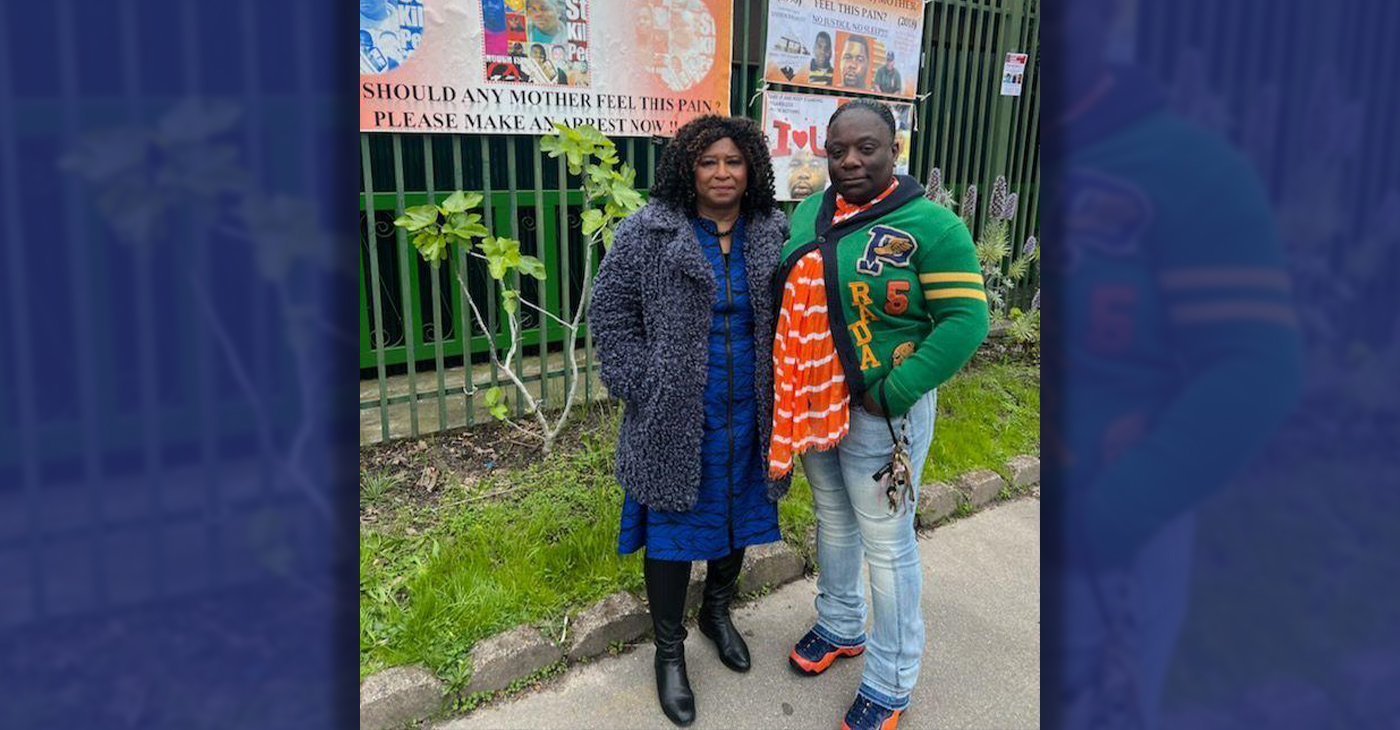
Publisher’s note: Last week, The Post published a photo showing Alameda County District Attorney Pamela Price with Carol Jones, whose son, Patrick DeMarco Scott, was gunned down by an unknown assailant in 2018. The photo was too small for readers to see where the women were and what they were doing. Here we show Price and Jones as they complete a walk in memory of Scott. For more information and to contribute, please contact Carol Jones at 510-978-5517 at morefoundation.help@gmail.com. Courtesy photo.
City Government
Vallejo Welcomes Interim City Manager Beverli Marshall
At Tuesday night’s Council meeting, the Vallejo City Council appointed Beverli Marshall as the interim city manager. Her tenure in the City Manager’s Office began today, Wednesday, April 10. Mayor Robert McConnell praised Marshall’s extensive background, noting her “wide breadth of experience in many areas that will assist the City and its citizens in understanding the complexity of the many issues that must be solved” in Vallejo.
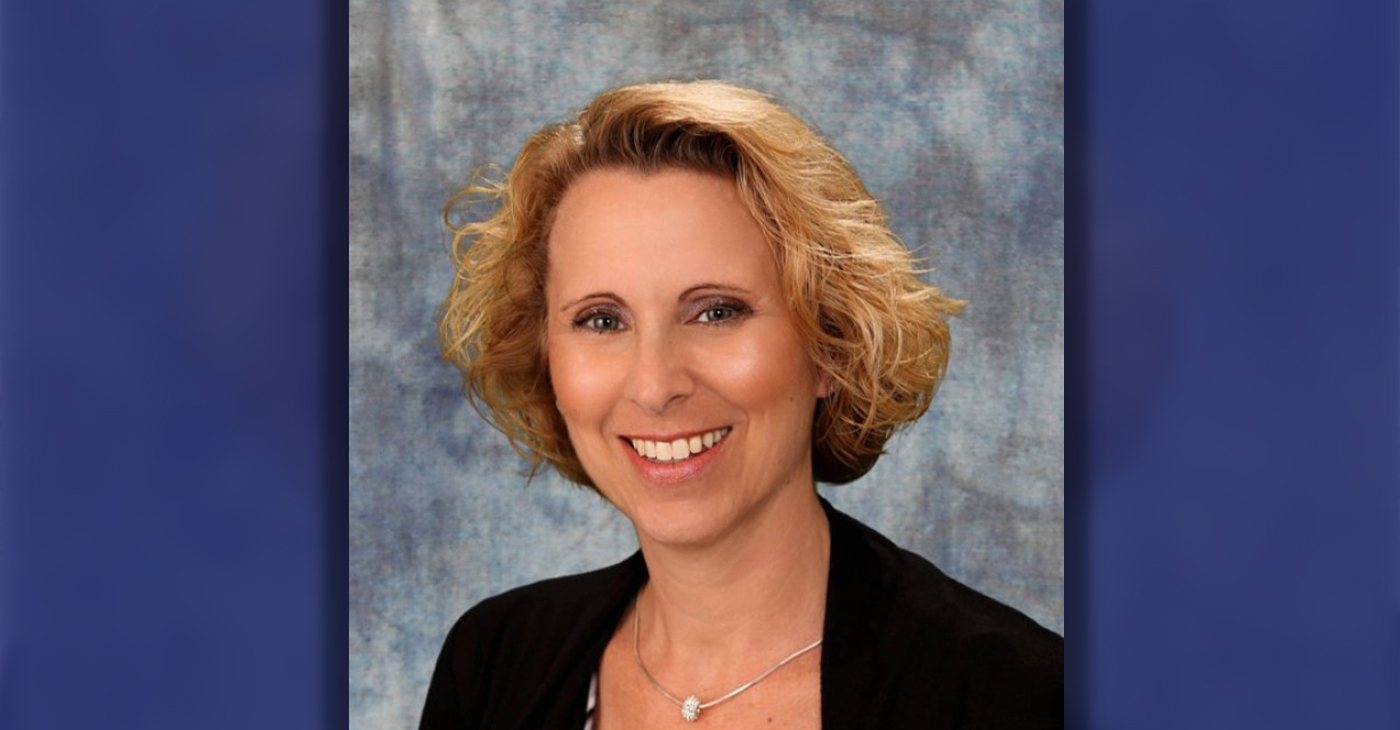
Special to The Post
At Tuesday night’s Council meeting, the Vallejo City Council appointed Beverli Marshall as the interim city manager. Her tenure in the City Manager’s Office began today, Wednesday, April 10.
Mayor Robert McConnell praised Marshall’s extensive background, noting her “wide breadth of experience in many areas that will assist the City and its citizens in understanding the complexity of the many issues that must be solved” in Vallejo.
Current City Manager Michael Malone, whose official departure is slated for April 18, expressed his well wishes. “I wish the City of Vallejo and Interim City Manager Marshall all the best in moving forward on the progress we’ve made to improve service to residents.” Malone expressed his hope that the staff and Council will work closely with ICM Marshall to “ensure success and prosperity for the City.”
According to the Vallejo Sun, Malone stepped into the role of interim city manager in 2021 and became permanent in 2022. Previously, Malone served as the city’s water director and decided to retire from city service e at the end of his contract which is April 18.
“I hope the excellent work of City staff will continue for years to come in Vallejo,” he said. “However, recent developments have led me to this decision to announce my retirement.”
When Malone was appointed, Vallejo was awash in scandals involving the housing division and the police department. A third of the city’s jobs went unfilled during most of his tenure, making for a rocky road for getting things done, the Vallejo Sun reported.
At last night’s council meeting, McConnell explained the selection process, highlighting the council’s confidence in achieving positive outcomes through a collaborative effort, and said this afternoon, “The Council is confident that by working closely together, positive results will be obtained.”
While the search for a permanent city manager is ongoing, an announcement is expected in the coming months.
On behalf of the City Council, Mayor McConnell extended gratitude to the staff, citizen groups, and recruitment firm.
“The Council wishes to thank the staff, the citizens’ group, and the recruitment firm for their diligent work and careful consideration for the selection of what is possibly the most important decision a Council can make on behalf of the betterment of our City,” McConnell said.
The Vallejo Sun contributed to this report.
City Government
Vallejo Community Members Appeal Major Use Permit for ELITE Charter School Expansion
Vallejo community members, former Solano County judge Paul Beeman and his wife Donna Beeman, filed an appeal against the approval of the Major Use Permit for the expansion of ELITE Public Schools into downtown less than two weeks after the Planning Commission approved the permit with a 6-1 vote.
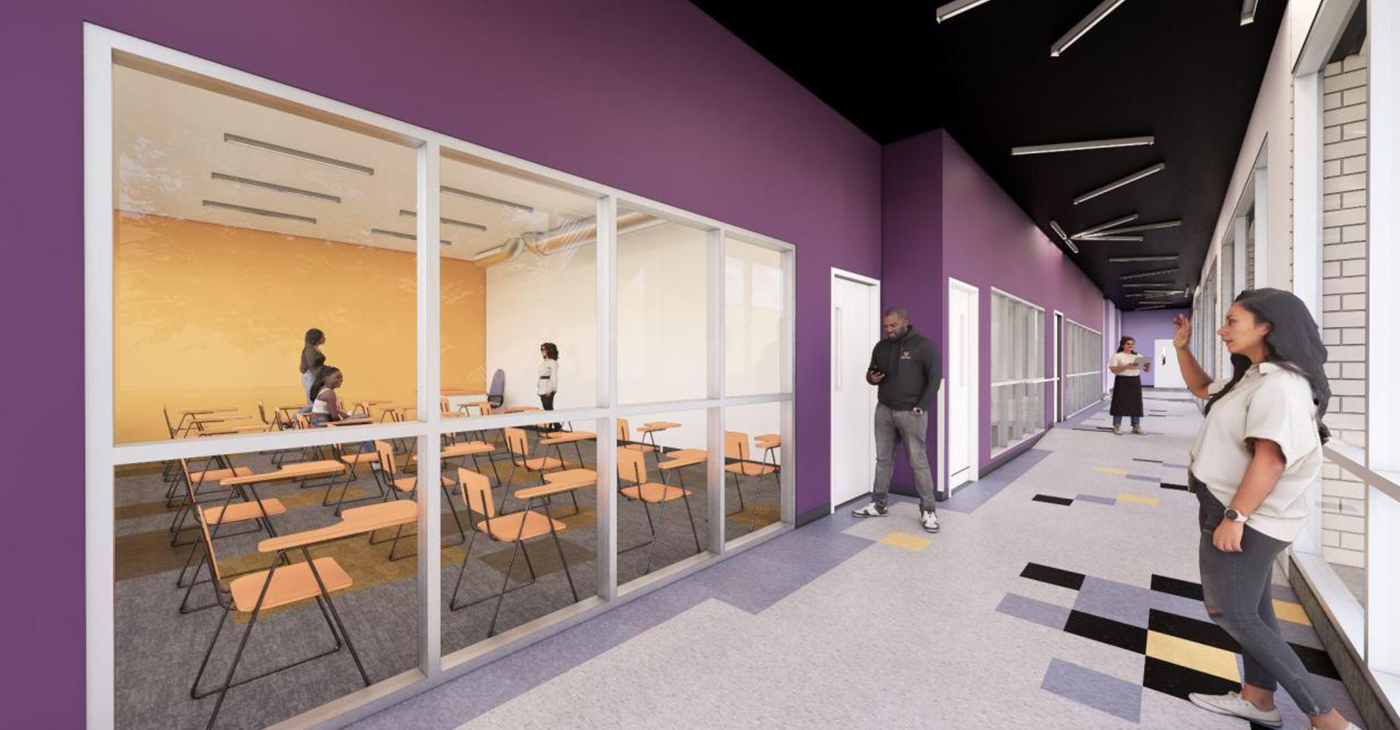
By Magaly Muñoz
Vallejo community members, former Solano County judge Paul Beeman and his wife Donna Beeman, filed an appeal against the approval of the Major Use Permit for the expansion of ELITE Public Schools into downtown less than two weeks after the Planning Commission approved the permit with a 6-1 vote.
ELITE Charter School has been attempting to move into the downtown Vallejo area at 241-255 Georgia Street for two years, aiming to increase its capacity for high school students. However, a small group of residents and business owners, most notably the Beeman’s, have opposed the move.
The former county judge and his wife’s appeal alleges inaccuracies in the city’s staff report and presentation, and concerns about the project’s exemption from the California Environmental Quality Act (CEQA).
The Beeman’s stress that their opposition is not based on the charter or the people associated with it but solely on land use issues and potential impact on their business, which is located directly next to the proposed school location.
The couple have been vocal in their opposition to the expansion charter school with records of this going back to spring of last year, stating that the arrival of the 400 students in downtown will create a nuisance to those in the area.
During the Planning Commission meeting, Mr. Beeman asked Commissioner Cohen-Thompson to recuse herself from voting citing a possible conflict of interest because she had voted to approve the school’s expansion as trustee of the Solano County Board of Education. However, Cohen-Thompson and City Attorney Laura Zagaroli maintained that her positions did not create a conflict.
“I feel 100% that the attorney’s opinion is wrong,” Beeman told the Post.
He believes that Cohen-Thompson has a vested interest in upholding her earlier vote as a trustee and is advocating for people to ratify her opinion.
Cohen-Thompson declined to comment on the Post’s story and Zagaroli did not respond for comment.
The Beeman’s further argue that the school’s presence in the commercial district could deter future businesses, including those who sell alcohol due to proximity to schools.
According to Alcohol Beverage Control (ABC), the department can deny any retail license located within 600 feet of a school. Only one alcohol selling business is located within that range, which is Bambino’s Italian restaurant at 300 feet from the proposed location.
The project’s proponents argue that the school would not affect current or future liquor-selling establishments as long as they follow the ABC agency’s guidelines.
The Beeman’s also referenced Vallejo’s General Plan 2040, stating that the proposed expansion does not align with the plan’s revitalization efforts or arts and entertainment use. They argue that such a development should focus on vacant and underutilized areas, in accordance with the plan.
The proposed location, 241 Georgia Street aligns with this plan and is a two minute walk from the Vallejo Transit Center.
The General Plan emphasizes activating the downtown with, “Workers, residents, and students activate the downtown area seven days a week, providing a critical mass to support a ‘cafe culture’ and technology access, sparking innovation and entrepreneurship.”
City staff recommended exempting the project from CEQA, citing negligible impacts. However, Beeman raised concerns about increased foot traffic potentially exacerbating existing issues like theft and the lack of police presence downtown. He shared that he’s had a few encounters with kids running around his office building and disturbing his work.
Tara Beasley-Stansberry, a Planning Commissioner and owner of Noonie’s Place, told the Post that the arrival of students in downtown can mean not only opportunities for surrounding businesses, but can allow for students to find their first jobs and continue to give back to the community in revitalization efforts.
Beasley-Stansberry had advocated for the students at the March Commission meeting, sharing disappointment in the way that community members spoke negatively of the teens.
“To characterize these children as criminals before they’ve even graduated from high school, that’s when I had to really take a look and I was kind of lost as to where we were as a city and as a community to where I couldn’t understand how we were viewing these children,” Beasley-Stansberry told the Post.
She added that the commissioners who voted yes on the project location have to do what is right for the community and that the city’s purpose is not all about generating businesses.
ELITE CEO Dr. Ramona Bishop, told the Post that they have worked with the city and responded to all questions and concerns from the appropriate departments. She claimed ELITE has one of the fastest growing schools in the county with mostly Vallejo residents.
“We have motivated college-bound high school students who deserve this downtown location designed just for them,” Bishop said. “We look forward to occupying our new [location] in the fall of 2024 and ask the Vallejo City Council to uphold their Planning Commission vote without delay.”
The Vallejo City Council will make the final decision about the project location and Major Use Permit on April 23.
-

 Activism4 weeks ago
Activism4 weeks agoOakland Post: Week of March 27 – April 2, 2024
-

 #NNPA BlackPress4 weeks ago
#NNPA BlackPress4 weeks agoCOMMENTARY: D.C. Crime Bill Fails to Address Root Causes of Violence and Incarceration
-

 #NNPA BlackPress4 weeks ago
#NNPA BlackPress4 weeks agoMayor, City Council President React to May 31 Closing of Birmingham-Southern College
-

 #NNPA BlackPress4 weeks ago
#NNPA BlackPress4 weeks agoBeloved Actor and Activist Louis Cameron Gossett Jr. Dies at 87
-

 Community1 week ago
Community1 week agoFinancial Assistance Bill for Descendants of Enslaved Persons to Help Them Purchase, Own, or Maintain a Home
-

 Activism3 weeks ago
Activism3 weeks agoOakland Post: Week of April 3 – 6, 2024
-

 Business1 week ago
Business1 week agoV.P. Kamala Harris: Americans With Criminal Records Will Soon Be Eligible for SBA Loans
-

 Activism2 weeks ago
Activism2 weeks agoOakland Post: Week of April 10 – 16, 2024

